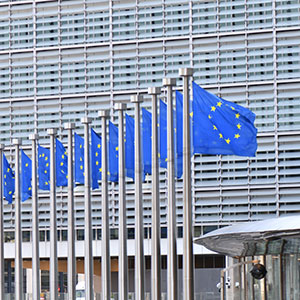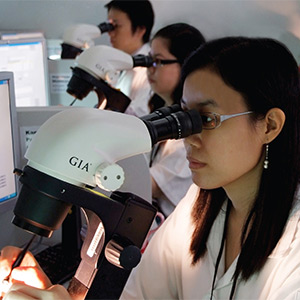
The European Commission (EC) ban on Russian diamonds may target lab-grown stones in addition to mined gems, according to a report from Agence France-Presse, which said it’s seen an advance copy of the EC proposal.
If approved by the 27 EU member states, the plan would prohibit Russian “nonindustrial natural and synthetic diamonds as well as diamond jewelry” from entering EU countries as of Jan. 1, the news agency reported.
A recent story by Reuters included the same wording. An EC spokesperson said the sanctions package was developed in coordination with the G7, which has also promised to bar Russian gems.
If the sanctions cover polished diamonds, lab-grown diamond importers would be required to provide chain of custody information documenting their stones’ origin—the same as natural diamond importers.
Sources who have spoken with G7 officials were skeptical that synthetic diamonds will ultimately be subjected to the same rules as natural gems. While Russia was once a leading producer of lab-grown diamonds, synthetic production has largely migrated to India and China (though Russia continues to produce lab-grown stones).
On the other hand, expanding the ban to include lab-grown diamonds might assuage the fears of African diamond producers, who have said the new rules unfairly target the natural sector. And it would represent a big change for the lab-grown industry, as its current supply chain lacks even basic controls.
The French report said the EC ban on Russian diamonds cut and polished elsewhere would be enacted gradually between March through September of next year.
“This phasing-in…takes into consideration the need to deploy an appropriate traceability mechanism that enables effective enforcement measures and minimizes disruptions for market players,” the proposal said, according to AFP.
One industry source tells JCK he expects that the G7 will give “guidance” to the industry on how to implement the ban. “We’re hopeful that whatever is put forward will cause minimal disruption, especially in the U.S. market,” he says.
Top: European Commission headquarters in Brussels (photo: Christophe Licoppe/courtesy of the European Commission)
- Subscribe to the JCK News Daily
- Subscribe to the JCK Special Report
- Follow JCK on Instagram: @jckmagazine
- Follow JCK on X: @jckmagazine
- Follow JCK on Facebook: @jckmagazine







